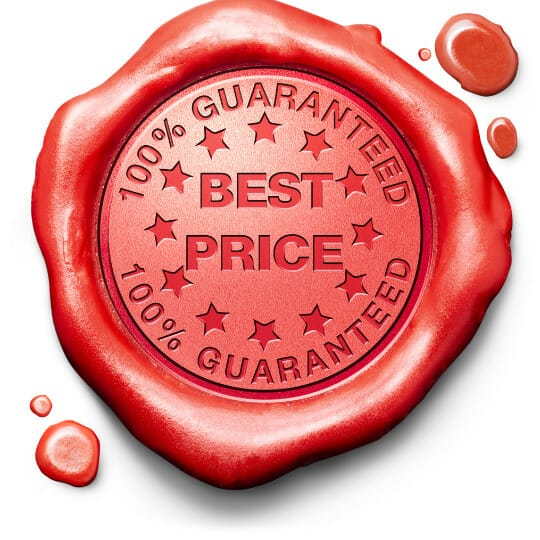
If you are a health coach and want to know how much to charge as a health and wellbeing coach, you’re in the right place. By the end of this episode, you’ll be clear on how to set health coaching prices that you’re comfortable charging, and that are good value to your clients.
You know what it’s like when you start working as a health and wellness coach. You’re about to launch your business, and you have no idea of what to charge.
You look at all the other coaches out there and see coaches charging wildly different amounts – where do you even start with working out coaching pricing?
Let’s dive into this very important topic and help you get your pricing right so you can launch your business with confidence and certainty that you’ll find clients who are willing to pay you for your coaching programs and packages.
There are a few things to consider when it comes to pricing your health coaching services.
Which market are you targeting?
For any service or product, there are pricing ‘norms’ for different markets. In coaching, we could broadly consider four markets:
I have listed them in this order on purpose – businesses or people with higher disposable income tend to pay more for health coaching services or buy in bigger volume, or both.
In this list, I’ve put corporate clients at the top of the pricing tree as organisations will likely pay more and/or buy more to keep their employees healthy.
Next are private niche clients – those that are not covered under the corporate banner, they tend to have a specific health problem they want to solve and would rather seek support from an independent specialist rather than go to a doctor. Remember, a niche is defined as a group of people with a big problem they will pay to solve, and they generally pay more per session or package compared to people who have fewer big drivers for change.
Next are healthcare/integrative medicine clients. They typically have a big health problem to solve and are seeing multiple professionals to get support, to get to the bottom of things. They’re motivated to pay for a solution that will help them manage their condition but they might also be spreading their available spend across multiple health practitioners.
Finally, there is coaching in a medical setting. People who go to doctors and are referred are more likely to be lower-income earners, possibly less motivated to make a lifestyle change, and/or looking to get Medicare or Private Health rebates (not willing to pay as much as other cohorts).
If we take these four broad markets as a starting point, it’s pretty clear that there are different levels of motivation to buy, the size of problem, and the ability to pay.
As a layer over the target market, there is also the type of person you’re dealing with.
Certain demographics have higher disposable income, and they’re the types of personalities who are already spending on other health services like massage, PT, supplements, food delivery services etc. This combination of demographics and personality will more likely spend money on coaching with fewer objections – if they can see the value.
Other people have very little disposable income and may be reluctant or simply unable to pay very much for coaching services. They’d more likely pursue the medical/Medicare route.

And regardless of income, some people are penny pinchers, some people have a victim mentality, and some people value health above all else and will do anything to improve it.
There are a lot of demographic and personality factors that affect someone’s willingness to pay for coaching services, no matter what the price.
Perceived value is a very important factor in setting pricing for health coaching packages and programs. A potential client’s mindset is that something must be ‘worth the money’ – meaning it must ‘give me the result I want’ and it also ‘must be proven to work’.
People are suspicious of anything that’s too cheap compared to the market rate. Cheap generally means ineffective, inexperienced or unqualified – or that a person doesn’t value or back themselves.
Think about how that affects trust, rapport and relationships!
There’s a saying that goes, ‘Nobody wants free kittens’ which is really saying that there must be something wrong with it if it’s free or very low cost.

People are also wary of anything that’s too expensive. Part of this mindset is that the person thinks about what they stand to lose if they don’t succeed! This is a double-edged sword, because while a higher price implies greater skill, knowledge and specialisation, people who buy health coaching services usually lack confidence in themselves because they’ve failed before – and what if this doesn’t work for them?
What does this mean for you?
It means that as a coach, you need to be very clear on your value proposition – who your program or package is for (the niche), what problem it helps them to solve, how much they might save as a result of doing this program, what they will avoid, and what they will gain.
The value proposition outlines why your program or package is worth the money. Your VP includes:
I have done a whole episode on the Goldilocks method of pricing and I teach this in Passion to Profit.
It’s basically this:
So, what do you charge for health coaching? Here’s a pricing guide for health coaches.

The common ways that coaches price their services are as follows. These pricing structures are relevant for both 1:1 coaching and group coaching:
I’ll just distinguish between these options so you know what they are.
Single sessions, charged per session or hour, are typically either for an introductory needs assessment (as a one-off) or as ad-hoc sessions. Ad-hoc sessions can be offered after a program or package has finished, or as an up-sell within a membership.
A program is a set number of consecutive sessions, e.g. 8-week program, 12-week program, 6 month program with either weekly, fortnightly or monthly sessions or some combination of these.
A lot of people use the word program and package interchangeably.
I prefer to define a package as a program of some kind for a fixed period but with other value-adds bundled in, for a higher price. For example, you package up a coaching program with 4 PT sessions, a well-being journal and water bottle, or some other combination of services, products, ebooks etc. A package might have a more flexible time period within which it can be used.
A monthly membership implies a set monthly fee on an ongoing basis, with a certain number of group coaching sessions, and usually along with some educational or other content housed in an online social media platform, learning platform or shared folder (e.g. Google Drive).
Basically, the more you include, the higher the price.
A lot of new coaches think about pricing ‘by the hour’ or session because we get used to the idea of ‘hourly rates’ as employees and customers.
A better way to go is value-based pricing, where you sell several sessions of coaching for one price, not based on hourly rates, but based on the value of the outcome to the client.
General health and wellness coaching industry rates are as follows:

These are general guidelines, but you must work out your pricing in terms of:
After all, people are buying results, and the better coach you are and the more proof you have of success, the more likely people will pay you for your coaching services.
The best question to ask yourself is this – ‘If I were a prospective client coming to my own business, would I pay that amount of money for this program to get those types of results?’
There are a lot of factors to consider when working out coaching pricing, and it comes down to a few key areas.
If you want to build a viable business, select a market that will pay enough money for and value the services you want to offer.
Next, decide on what type of service you want to offer.
Finally, make sure you create a compelling value proposition for your services so that both you and your prospective clients feel good about the exchange of value – that is, your services for their money.
Understanding who you are and what you need will allow your business to thrive! If you’re truly ready to break old habits and get out of the rut I encourage you to check out the Habitology membership.
Learn more here:
© 2024 Melanie White